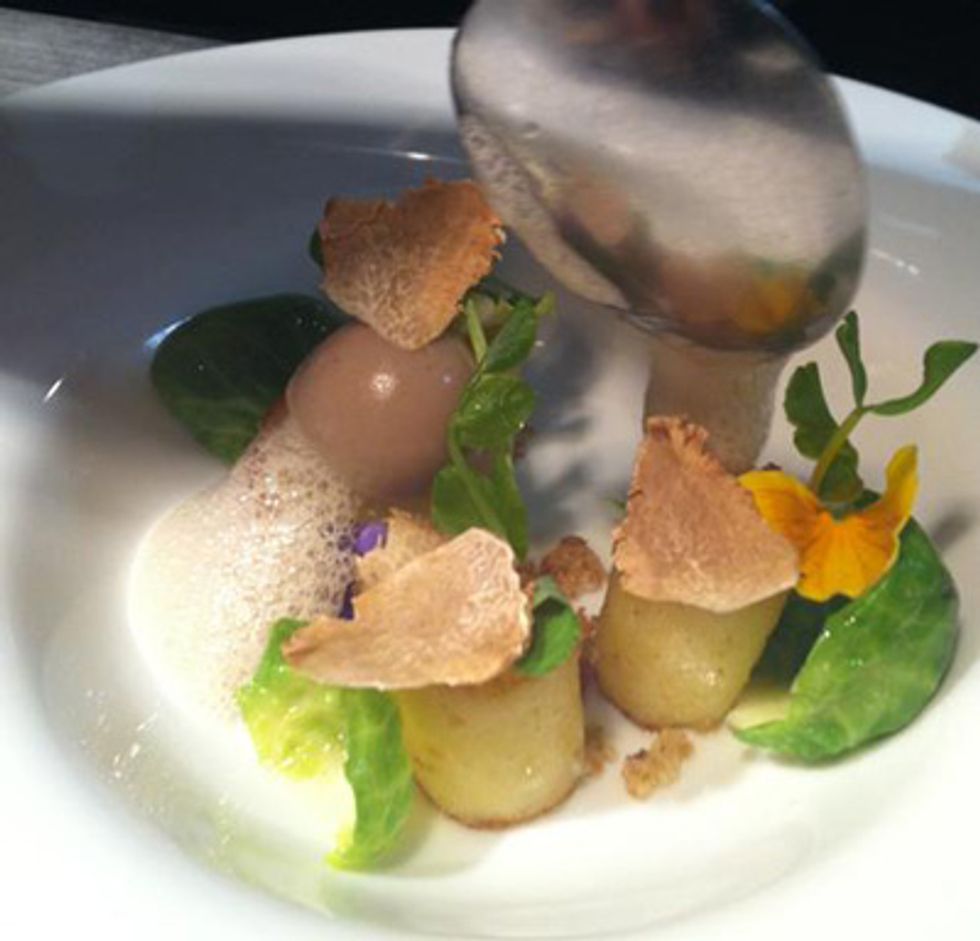It's been said that New York has better seafood than San Francisco, but when it comes to vegetables, there's no contest. The Bay Area's wealth of produce is second to none in the U.S. So while chefs at fancy spots like Le Bernardin and Eleven Madison Park in New York are spending hours slowly cooking filets of fish in sous vide bags, San Francisco chefs are also taking equally careful measures with veggies. Although sous vide—a method in which items are cooked long and slow at highly controlled temperatures—has been in rotation among pro chefs since the 90s, here's why San Francisco chefs are using the technique with vegetables more now than ever before.
Chef Dominique Crenn shows her reverence for produce in a starter that's always on her menu at Atelier Crenn: "Le jardin," an artistic plate composed of vegetables from the garden that are gently cooked sous vide. Crenn says cooking this way is certainly more of an investment. Not only does it take more time, but the machinery can cost anywhere from $800 to $1500. The kitchen needs two components: a vacuum sealer, to neatly enclose foods in a plastic bag, and an immersion circulator which gently holds the bag in a bath of heated water. For vegetables, temperature is normally held at about 85 degrees Celsius with time varying from 15 minutes to up to two hours for more fibrous vegetables like fennel and turnips.
Crenn has three sous vide machines running at one time in the kitchen, allowing her to produce "le jardin" with precision, along with other delicate creations like her potato "memoire d'enfance" (pictured), containing small potatoes cooked sous vide with goat butter, thyme and garlic, then served with a chestnut "sphere," potato consume emulsion, Alba truffle and crones.
At Commonwealth, Jason Fox cooks spheres of pumpkin sous vide for his pumpkin salad, but he likes the sous vide vacuum sealer just as much for its ability to compress vegetables. For the same salad, Fox uses the vacuum to suck the extra water and air out of Asian pear, making the fruit crisper and the flavor much more intense.
In this economy, all this meticulous attention to detail and extra up-front cost has got to be worth it. Crenn and Fox say the sous vide process allows the vegetables to keep their integrity throught the cooking process, preventing them from becoming mushy or cooking unevenly as they can with other methods. The high amount of control sous vide allows, also results in a reliably tender, better tasting finished product. The precision also allows chefs to cook exactly how much they need for one evening, lessening waste considerably. "The investment is worth it in the long run," says Crenn.
When doesn't sous vide work wonders? Well, the techniques are pretty much lost on green leafy things like spinach, and kale. You might as well cook those vegetables the old-fashioned way.
If you want to delve into sous vide cookery at home, a starter kit can run you as little as $300 on Amazon. Or just spend some time sampling these delicate dishes around town, all of them using sous vide techniques to bring their vegetables from farm to table with the gentle touch Bay Area produce deserves.





















